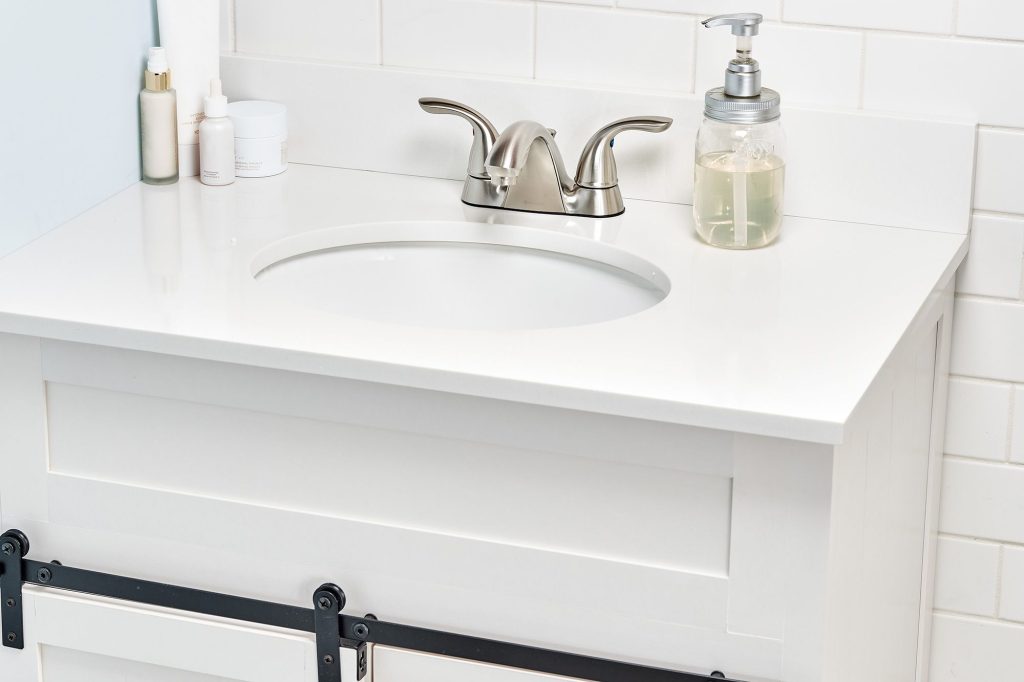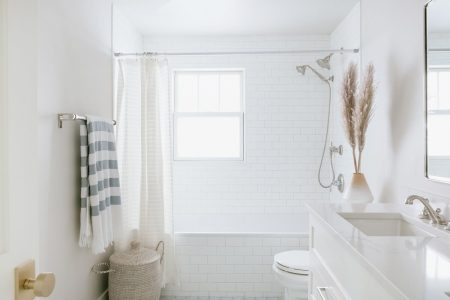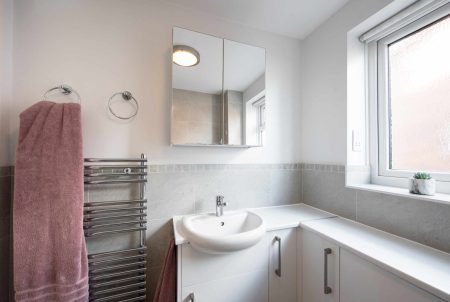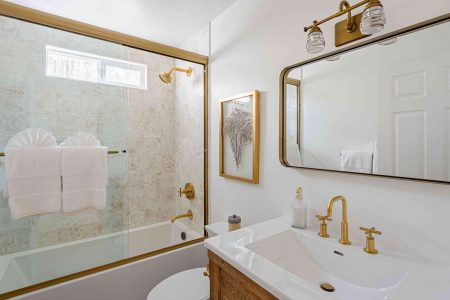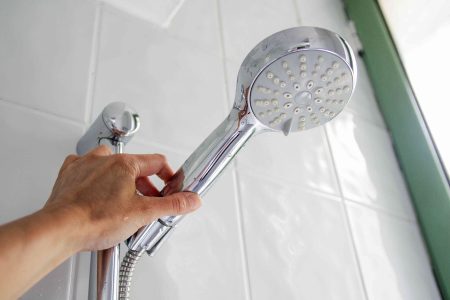Along with kitchens, bathrooms offer one of the best returns on your renovation dollars. And one of the easiest ways to update your bathroom is to replace the vanity, countertop, sink, and faucet. For a few hundred dollars, you can really freshen the space, while for $1,000 or more, you can add that upscale spa-like look to your bathroom. The first step in this easy renovation is to remove the old vanity, which takes less than an hour.
Installing a new vanity is easiest with a unit that includes a countertop with an integrated sink. The vanity cabinet is separate from the top. The cabinet has an open top and back, so it’s easy to set in place and fasten from above. Once the cabinet is secured, the countertop-sink unit is dropped in, usually with the faucet pre-installed. The final step is making the water supply and drain connections. Some vanity sets include a separate backsplash piece. This is typically installed with caulk or adhesive after the countertop is secured.
Need more help? Talk to a plumber near you
Our partners can help you compare quotes from top-rated professionals near you
Get a Quote
What You’ll Need
Equipment / Tools
- Stud finder
- Tape measure
- Level
- Pencil
- Drill with screwdriver bits
- Jigsaw (as needed)
- Coping saw (as needed)
- Small profile gauge (as needed)
- Carpenter’s compass (as needed)
- Caulk gun
Materials
- Vanity with countertop and sink
- Wood shims
- 2-inch drywall screws
- Filler strip (as needed)
- Wood finish materials (as needed)
- Wood blocking
- Silicone caulk
- Faucet
- Water supply tubes
- Sink drain assembly
Instructions
-
Locate the Wall Studs
Use an electronic stud finder to locate at least one wall stud on the wall behind the vanity location. Mark the center of the stud. Repeat the process to find a second stud if possible (studs are typically 16 inches apart, center-to-center). If the vanity is boxed in by a sidewall, also find the wall studs in the sidewall.
-
Set and Fasten the Vanity
Measure the height of the vanity cabinet (not including the countertop), and transfer this dimension to the back wall (and sidewall, if applicable). Use a level to draw a straight line at the marked height.
Place the vanity cabinet into position. Confirm that the cabinet is level both side-to-side and front-to-back using the line you drew. If necessary, use wood shims slipped under the cabinet to level it. Secure the cabinet to the back wall with two 3-inch cabinet screws driven through the mounting strip in the back of the cabinet and into each wall stud in the back wall only. If there is a sidewall, you will fasten that to the wall after fitting a filler strip.
-
Fill the Side Gap (Sidewall Installation Only)
If there is a wide or undesirable gap between the cabinet and the sidewall, you can cut a narrow filler strip to fill in the gap. This may involve shaping the filler strip to fit around a baseboard or coved tile piece at the bottom of the cabinet.
To do so, use a small profile gauge or carpenter’s compass to “copy” the profile of the side wall onto the wood strip. Alternatively, create a paper template that matches the profile and transfer the profile onto the filler strip by tracing it with a pencil.
Cut out the profile with a coping saw or jigsaw. Test-fit the filler strip and adjust as necessary. Sand and finish the wood strip to match the base cabinet. Attach the strip to the cabinet with screws driven through the inside edge of the cabinet face frame and into the edge of the filler strip. If the strip is thin material, glue it in place with a small amount of epoxy rather than using screws.
-
Fasten to the Sidewall (Sidewall Installation Only)
Although this step is sometimes omitted, it is best to anchor the side of the vanity cabinet to the sidewall, as well as securing the cabinet to the back wall. Because there is a gap between the side of the cabinet and the wall to allow for the vanity countertop, you’ll need to add blocks to the gap for support before driving screws.
Cut two wood spacer blocks to a width about 1/8 inch short of the distance from the vanity side to the wall. Place two wood shims between the wood spacer blocks and the wall.
Drive a drywall screw through the cabinet side and into the wall at a stud location, making sure the screw is long enough to extend at least 1 inch into the stud. This will draw the side of the cabinet snug against your spacing blocks and shims.
-
Install the Vanity Top
If the sink is separate from the countertop rather than an integral piece, attach it to the countertop before installing the countertop on the vanity. Install the faucet and drain fittings, following the manufacturer’s directions.
Place a small amount of construction adhesive onto the top corners of the cabinet. Set the countertop/sink assembly in place onto the cabinet so it overhangs evenly on all exposed sides.
-
Connect the Plumbing
Connect the water supply lines to the faucet, and connect the sink drain to the drain trap and the branch drain, following the manufacturer’s instructions.
-
Install the Backsplash (as Needed)
If your vanity came with a separate backsplash, apply a bead of construction adhesive in a serpentine pattern to the back of the backsplash and press it firmly into place against the wall.
-
Caulk the Joints
Apply a bead of silicone caulk where the countertop meets the wall. If there is a backsplash, caulk along all joints where the backsplash meets the wall and where it meets the countertop. Let the caulk cure for 24 hours before using the vanity.
Read the full article here







